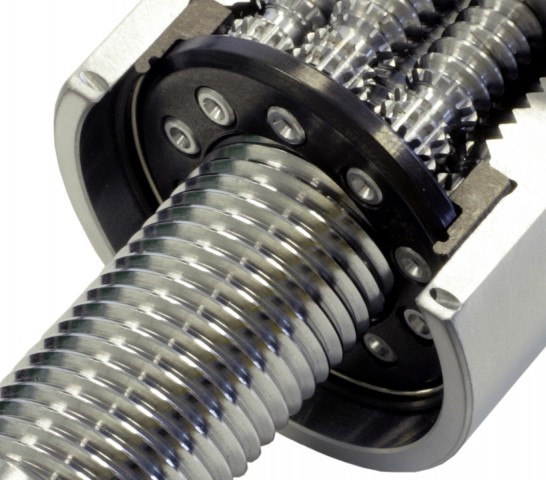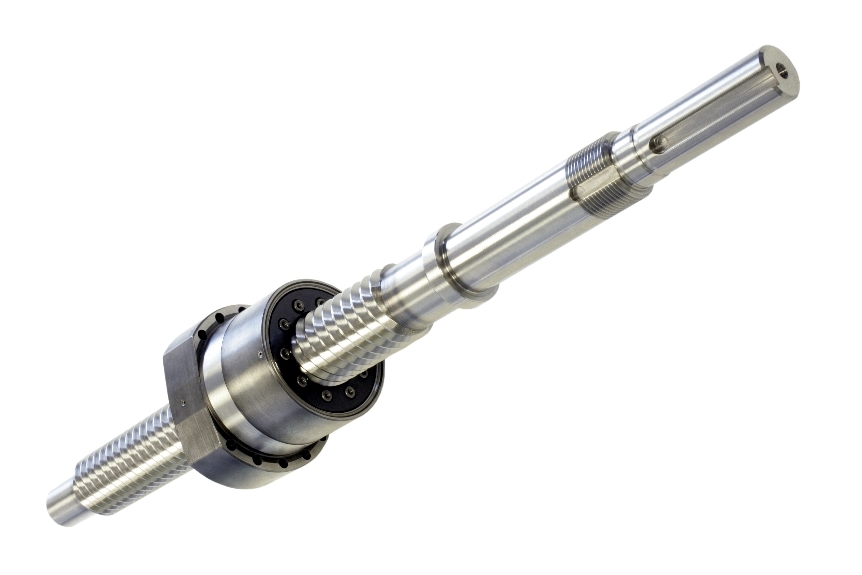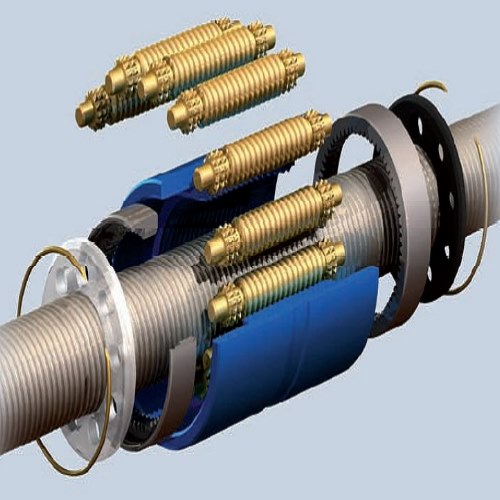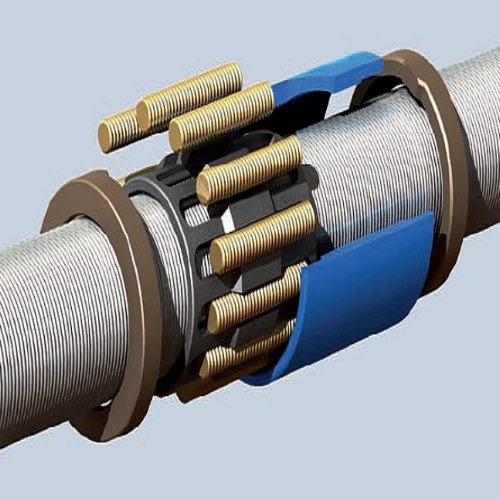

There are many ways of transferring a rotational force into a linear one, particularly in the world of linear translation devices. Such devices include the simple lead screw and plastic nut and the industrial standard recirculating ball screw device. Each design discipline has advantages and disadvantages over the other but equally each have a legitimate place in the linear market. However, an often misunderstood linear device is the satellite roller screw and it is worth of some extra attention by nature of its function and capability.
.jpg)
With a traditional recirculating ball screw design, the captivated ball bearings within the nut housing transfer the load (force) between the screw and nut. This ordinarily means that in order to increase the load capacity, but remain with the same sized screw, you have to change the ball nuts physical parameters. Firstly, an increase in the amount of ball bearings physical touching the load surface of screw and nut within the nut housing will increase its load capacity. This can be done by increasing the amount of times the ball bearings recirculate within the ball nut housing, but the playoff of this change normally means a larger diameter nut housing or a longer nut housing. To this effect, the ball nut size versus its load capacity will always be apposing each other. It is true to say that all these options ultimately increase the load capacity, but in every case there is still a limitation of the actual load bearing surface area per ball bearing. This is where the satellite roller screw has a large advantage, which ultimately translates into a high load transfer capability.
A satellite roller screw employs, matched rollers to rotate (or satellite as the product name suggests) around the screw thread during actuation instead of ball bearings. By design, there is an immediate increase in the physical amount of contact points on the screw that can support a load compared with that of the same diameter ball screw. The satellite roller screw is therefore primarily chosen as part of a transition within a new or existing design to achieve greater load capacity and greater linear positional accuracy, in the smallest envelope space.
The admissible static and dynamic load capacities are therefore considerably higher than that of ball screw for the same diameter. In fact the static load can be 3 times greater than that of ball screws and as a consequence their lifespan can be up to 15 times longer. The many points of contact also give a satellite roller screw greater rigidity and shock tolerance than a ball screw without a compromise to friction or efficiency. 
Additionally, Satellite roller screws can also rotate significantly faster and support much greater accelerations than ball screws as there is no recycling of the ball bearings. In fact, a roller screw mechanism can handle twice the rotation speed of a ball screw. It is also possible to supply planetary roller screws with smaller leads compared to ball screws. As the lead is a function of the pitch of the planetary roller screw, the lead can be very small (0.5mm and even less). The lead can be chosen and supplied without any geometrical changes of both the screw shaft and the nut body. In a ball screw the lead is limited by the dimension (Outside Diameter) of the bearing ball, which is a standard feature.
Available through ABSSAC the satellite screw product has two standard designs directly aimed at replacing less effective ball screw designs. However, and probably most importantly there is also a full design capability of the standard satellite screw program which continues to “upgrade” linear designs around the world. The satellite roller screw program, exclusively available from ABSSAC limited, is proving to have a formidable advantage in the linear technology sector.
There are two main satellite roller screw nut designs;
Type - RV AND BRV
 When the screw turns, the satellite rollers move as the lead on the screw. In this execution the rollers are in constant contact with the thread of the screw and the thread of the nut. The rollers do not move axially relative to the nut and are not recycled. Due to its design this execution is particularly suitable for applications where high axial loads, high speed, and high feed speeds are requested. RV and BRV may be distinguished from each other by the execution of the screw. The RV screw has a ground thread whereas the BRV has a precision rolled one.
When the screw turns, the satellite rollers move as the lead on the screw. In this execution the rollers are in constant contact with the thread of the screw and the thread of the nut. The rollers do not move axially relative to the nut and are not recycled. Due to its design this execution is particularly suitable for applications where high axial loads, high speed, and high feed speeds are requested. RV and BRV may be distinguished from each other by the execution of the screw. The RV screw has a ground thread whereas the BRV has a precision rolled one.
Type - RVR
 The RVR execution is designed for small leads and is used where a high positioning precision is required in association with high stiffness and heavier axial loads. As the rollers are recycled after each of their revolutions, this design is not suitable for high speeds.
The RVR execution is designed for small leads and is used where a high positioning precision is required in association with high stiffness and heavier axial loads. As the rollers are recycled after each of their revolutions, this design is not suitable for high speeds.
Nut Styles : (Nuts can be preloaded to obtain zerobacklash)
The key product advantages are:
